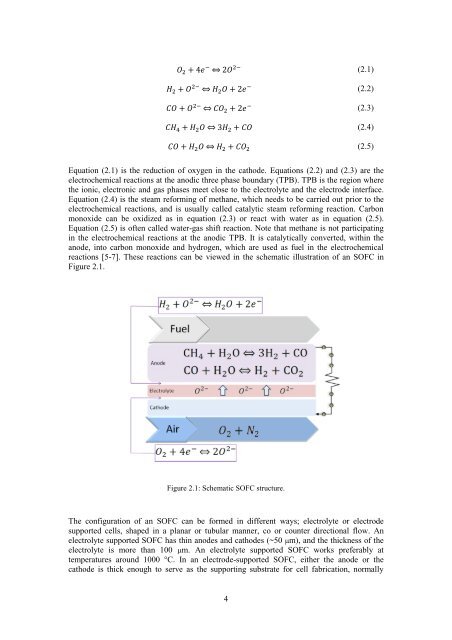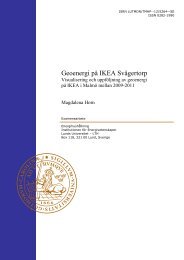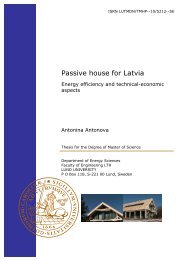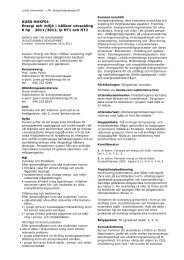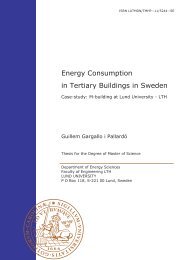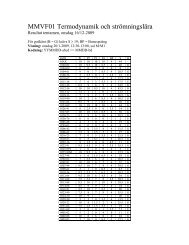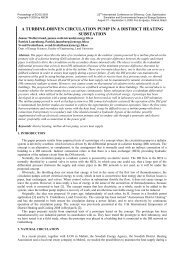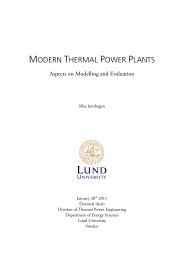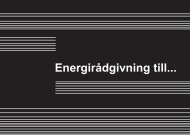Thesis for degree: Licentiate of Engineering
Thesis for degree: Licentiate of Engineering
Thesis for degree: Licentiate of Engineering
You also want an ePaper? Increase the reach of your titles
YUMPU automatically turns print PDFs into web optimized ePapers that Google loves.
(2.1)<br />
(2.2)<br />
(2.3)<br />
(2.4)<br />
(2.5)<br />
Equation (2.1) is the reduction <strong>of</strong> oxygen in the cathode. Equations (2.2) and (2.3) are the<br />
electrochemical reactions at the anodic three phase boundary (TPB). TPB is the region where<br />
the ionic, electronic and gas phases meet close to the electrolyte and the electrode interface.<br />
Equation (2.4) is the steam re<strong>for</strong>ming <strong>of</strong> methane, which needs to be carried out prior to the<br />
electrochemical reactions, and is usually called catalytic steam re<strong>for</strong>ming reaction. Carbon<br />
monoxide can be oxidized as in equation (2.3) or react with water as in equation (2.5).<br />
Equation (2.5) is <strong>of</strong>ten called water-gas shift reaction. Note that methane is not participating<br />
in the electrochemical reactions at the anodic TPB. It is catalytically converted, within the<br />
anode, into carbon monoxide and hydrogen, which are used as fuel in the electrochemical<br />
reactions [5-7]. These reactions can be viewed in the schematic illustration <strong>of</strong> an SOFC in<br />
Figure 2.1.<br />
Figure 2.1: Schematic SOFC structure.<br />
The configuration <strong>of</strong> an SOFC can be <strong>for</strong>med in different ways; electrolyte or electrode<br />
supported cells, shaped in a planar or tubular manner, co or counter directional flow. An<br />
electrolyte supported SOFC has thin anodes and cathodes (~50 m), and the thickness <strong>of</strong> the<br />
electrolyte is more than 100 m. An electrolyte supported SOFC works preferably at<br />
temperatures around 1000 °C. In an electrode-supported SOFC, either the anode or the<br />
cathode is thick enough to serve as the supporting substrate <strong>for</strong> cell fabrication, normally<br />
4


